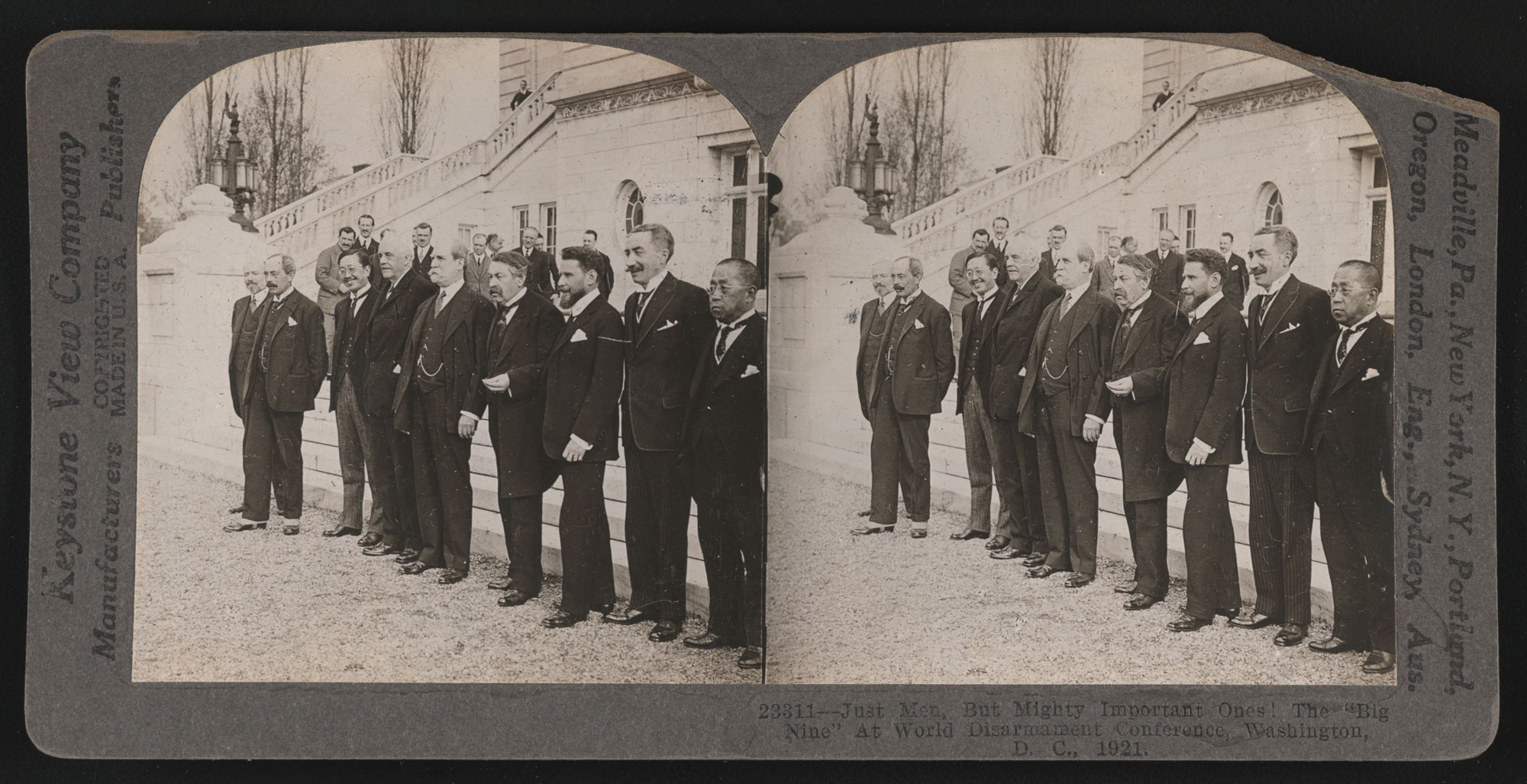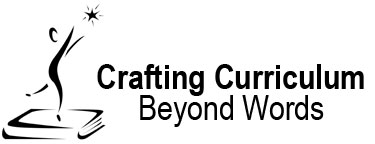
This 45-minute lesson is designed to help students explore historical events (the 1921 Washington Conference; disarmament efforts after the Great War) in context of a persistent issue throughout history: national sovereignty v. international law. Students will develop skills and habits of mind associated with thinking critically about visual information. The lesson features a three-part teaching strategy. First, you’ll lead an informal class-wide conversation that culminates in an open-ended question; Second, you’ll support students as they interpret a historical photograph; Third, you’ll encourage students to begin to answer the question.
PART 1: THE CONVERSATION (10 minutes): Try initiating a seemingly impromptu conversation by asking students: “should there be a ‘pause’ on the development of advanced artificial intelligence (AI) systems?” While students share their thoughts aloud you can share arguments from both sides including from researchers who wrote an open letter that advocated for a pause to afford technology companies and government regulators time to craft protections from the risks of artificial intelligence. You may also want to discuss the potential harms (AI systems can be disinformation engines, perpetuate systemic bias, and exactly reproduce personally identifiable information1) and benefits (automation, productivity, data collection and complex problems-solving2). Students may also talk about potential causes and consequences of AI systems being totally banned or totally limitless. Remember: this is not intended to be a lengthy, formal discussion. Rather, it’s a brief grabber to gather students’ interest. Be mindful of your time and stay focused.
You might also share that today, instead of bookwork, worksheets, or a lecture, students will gather information and take notes from critically analyzing a historical photograph. Thinking deeply about this photograph should help them begin to explore the balance between a what a nation wants to do in its own interest (national sovereignty) and what other nations want it to do (international law or concern). You may want to click HERE to read a helpful one-page “Fact Sheet” from the United Nations that discusses International Law.
As a transition from the conversation and whichever open-ended question you decide to emphasize, you should share with students that the skills they will sharpen today are essential for 21st century citizenship. You can remind students that there are, and will likely always be, people and groups who intentionally use images to influence their decision-making (i.e., how to spend money, who to vote for). You can share that today students will think about a historical photograph, using it as evidence to build a claim about an open-ended question, but they hopefully will be able to take that authentic skill and use it to improve their lives away from school (i.e., as they encounter visual information such as advertisements and social media).
Once each student has a copy of the data retrieval chart, you should make available the photograph, Just men, but mighty important ones! The “Big Nine” at the World Disarmament Conference, Washington, D.C., 1921. You could project the photograph as a multimedia presentation slide and have students work together as a whole class. Or you could ask each student to access a digital copy of the photograph and have them work individually. This lesson plan encourages you to have students work in small groups of about four or five; however, it’s your decision how to implement the lesson.
Regardless of how you make the photograph available to students, you’ll need the Teacher Handout designed specifically for this lesson. It would be best to study the handout well before leading students through this lesson because it’s a primer for the photograph that provides information and a script of talking points for skillfully guiding students in an exploration of how nations tend to deliberate national sovereignty and international law as it relates to disarmament.
Next, place students into small groups of four or five, it would be best to make these groups prior to the day of the lesson and attend to students’ strengths and potential limitations, personalities, and multiple intelligences. Then, proceed with the analysis of the photograph. Give the groups approximately 10 minutes to think together about the photograph “historically” following the components listed on the Student Handout. It’s very important during this time that you to move about the room, visit with each group, initiate conversations regarding their historical thinking, and offer specific, individualized feedback: this is called scaffolding.
get to the next level of thinking. Hard scaffolds are the static supports that anticipate general difficulties (i.e., providing definitions for challenging terminology and graphic organizers). Soft scaffolds are dynamic, situation specific aids to help learners process data, (i.e., just-intime conversations).
PART 3: THE ANSWER (10 minutes): After students have analyzed and discussed the historical photograph, ask them to formally to use the skills built and information gathered from today to address the open-ended question you posited earlier. You could ask students to create and submit a 1-minute video or send you an email with their answer. Or they could write their answer on the back of the data retrieval chart; regardless of what tools students use to answer the question, it’s important that you provide each student with individualized, formative feedback. To produce a truly comprehensive answer to such a complex issue, students will need more than just today’s lesson. Still, they should be able to craft a preliminary answer to the question in regard to one of the domains of international law: disarmament.
You can end this lesson by reiterating how the skills and habits of mind practiced today have tremendous value in everyday life, especially considering the amount of visual information produced and consumed on social media platforms.
1 see Clarke, L., (April 11, 2023) Alarmed tech leaders call for AI research pause. Science.
2 see Maheshwari, R. (April 11, 2023). Advantages Of Artificial Intelligence (AI) In 2023. Forbes Advisor.
